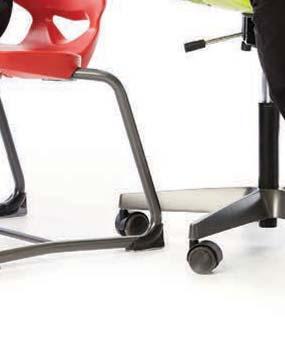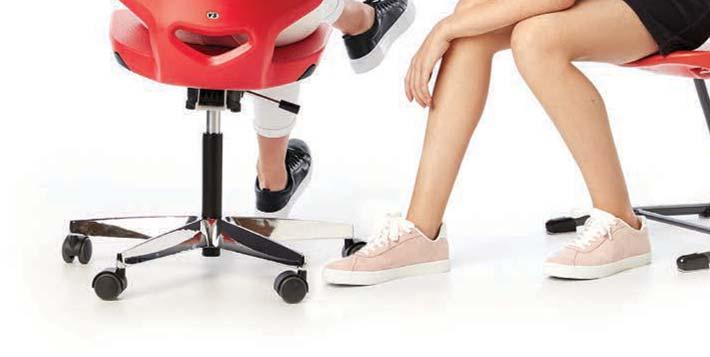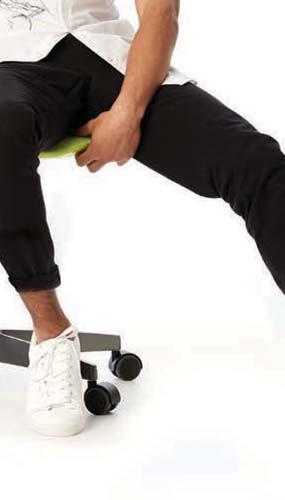
1 minute read
CHAIRS
When you specify chairs, they should enable a high degree of freedom in your learning space. Easily adjustable to individual body heights. And flexible enough to respond to free flowing body movements.
It’s key to understand that students at any age are not able to sit still for long periods of time. Having the ability to sit, stand, and move around is always optimal for healthy, growing, and often fidgety bodies. That’s why chairs should not be used for long-term sitting and should feature agile, three-dimensional sitting, enabling micro and macro movements.





Multi-dimensional seat mobility promotes the right kinds of complex interactions between legs, pelvis, spine, shoulders, and head. In particular, “unlocking” of the pelvis is very important. The biomechanical analysis of the body shows pelvic movement activates the entire muscular and skeletal systems, benefiting the body in myriad ways.

3D seat mobility benefits
• Promotes physiological position changes
• Keeps intervertebral discs flowing with nutrients
• Provides complex and rhythmic stimulation to muscles involved in the sitting posture

• Activates the 100+ joints in the spine
• Exerts dynamic strain and relief on internal organs

• Aids blood circulation and oxygen supply to the blood



• Promotes fat and sugar metabolism
• Stimulates neuroplastic processes in the brain
The physiological benefits of multi-dimensional sitting has positive impacts on short-term and medium-term concentration.














